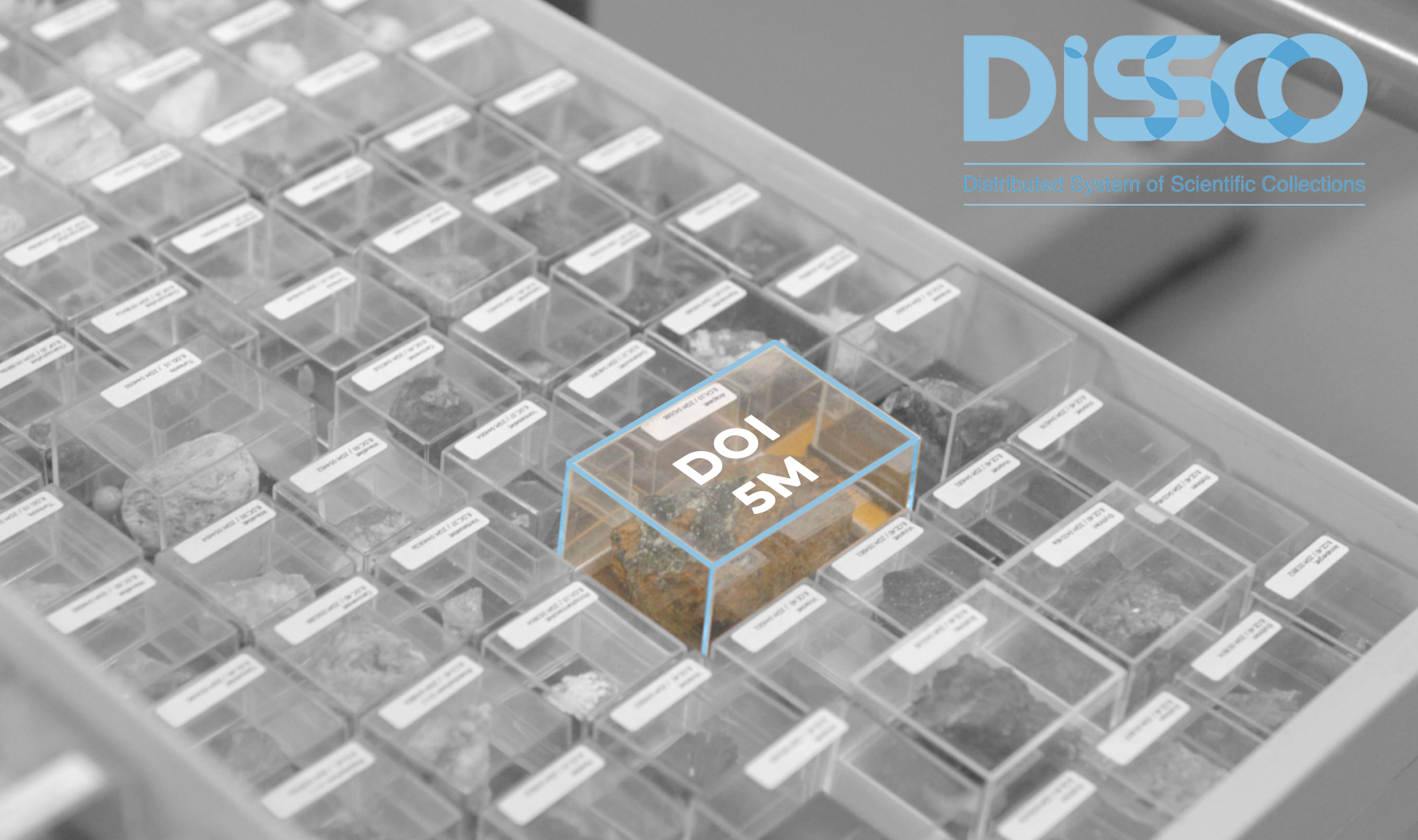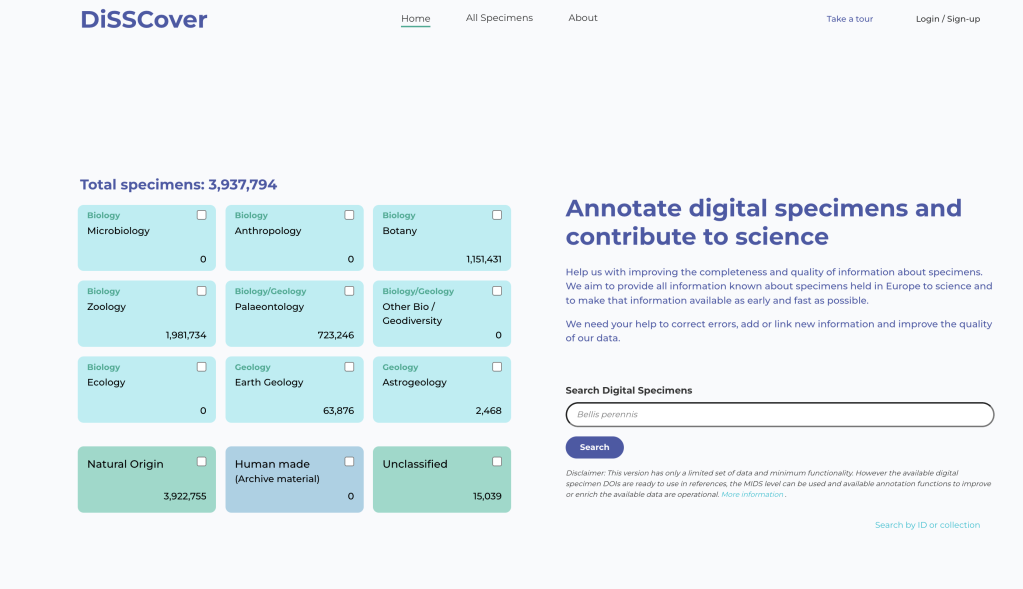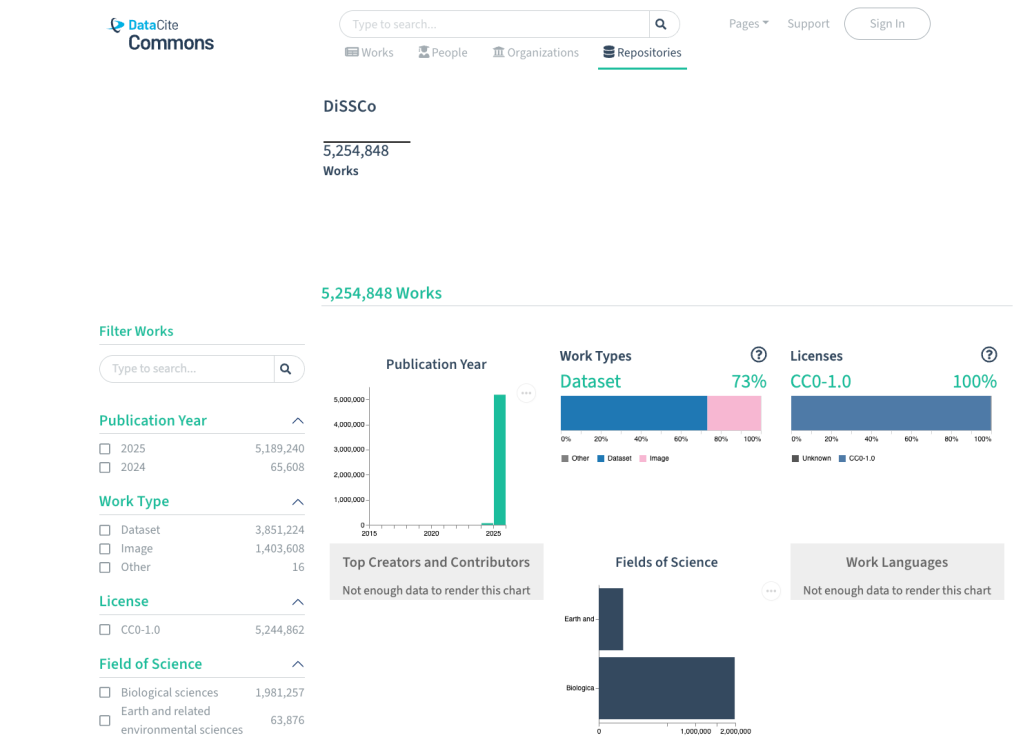
20 Aug. 2025
Authors: Sharif Islam, Wouter Addink, Soulaine Theocharides, and Sam Leeflang.
We are proud to announce a major milestone: over five million digital specimens and digital media objects are now available in DiSSCo. You can see them right now on our DiSSCover platform! These resources are now live and can be referenced through their DOIs (Digital Object Identifiers).

Screenshot of DiSSCover portal. Aug 19, 2025
Why this matters
Citability: Using DiSSCo’s DOI, researchers can unambiguously reference specific specimens in publications. These DOIs are globally unique and assigned to every digital specimen and media item in DiSSCover. These identifiers resolve to the landing page on DiSSCover, and contain additional metadata for machine actionability. Note that there is now a specific field for this in Darwin Core data standard called digitalSpecimenID.
Provenance: DiSSCo captures all changes related to a specimen or media object. Using DiSSCo’s versioning capability, you can go back in time and see how data has changed.
Community Curation: DiSSCover’s primary feature is community annotation and curation. Users can annotate data in DiSSCover with the help of AI, allowing a community of experts to address data gaps and quality issues quickly in any specimen collection available on the platform. The more specimens that have a digital presence, the greater the experts’ reach.
How does it work
Each specimen and media object in DiSSCo is a FAIR Digital Object (FDO). This means it is more than just a specimen or media. It’s a machine-actionable object with a persistent Identifier, structured metadata, and a transparent provenance. These identifiers and their corresponding metadata (known as FDO Records) enable reliable referencing, citation, and integration into research workflows across disciplines. The objects form a digital surrogate of the physical specimen, encompassing not only collection event details, taxonomic information but also measurements, assessments, and connections to derived datasets.
This infrastructure is underpinned by:
- A Technical Readiness Level 6 (TRL6) Minimum Viable Product of core infrastructure (see more details about the technical design and background in DiSSCo Prepare milestone output)
- The openDS specification for standardising digital specimen data representation
- FDO Profiles for consistent, type-aware metadata
- A robust Persistent Identifier (PID) infrastructure providing DOIs through a collaboration with DataCite

These digital objects are also findable in the DataCite Commons. Screenshot captured, Aug 19, 2025
Together, these components bring DiSSCo closer to its vision of a pan-European, open, and interoperable Research Infrastructure for natural science collections, mobilising FAIR biological and geological specimen data.
What’s next?
In the next phase of development toward full operation we aim to grow to 20 million combined digital specimens and media. With 500 million specimens in the CETAF institutions in Europe alone, from which only a fraction is digitised, we know we have a long way to go but we are ready for the challenge.
Do you want to know more about the technical side of DiSSCo? DiSSCo puts different technical knowledge platforms at the scientific community’s disposal:
DiSSCoTech: Get the latest technical posts about the design of DiSSCo’s Infrastructure
DiSSCo GitHub: Code hosting for DiSSCo software, version control and collaboration
DiSSCo Modelling Framework: A WikiBase tool that is configured to create an abstraction of the DiSSCo data model